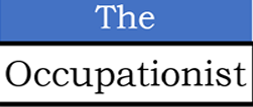An Air Traffic Controller (ATC) controls air traffic in the airport as well as in the skies when an aircraft is within vicinity of airport it is intending to land.
ATCs use radar, computers, or visual references to do the job. They usually manage multiple aircrafts at the same time and take quick decisions to ensure safety of the aircraft.

Some of the other tasks done by ATC include:
- To inform pilots about any aircrafts nearby.
- Alerting pilots regarding potentially hazardous conditions, such as weather, speed and direction of wind, or visibility problems also forms a part of their task.
- Transfer control of departing flights to traffic control centers of destination and accept control of arriving flights.
- Alert airport emergency services in cases of an emergency or when pilot/aircraft are experiencing difficulties.
- Monitor and if necessary, direct the movement of aircraft within an assigned air space or on the ground at airports to minimize delays and maximize safety.
Based on the tasks done by ATC as mentioned above, the health risks and some mitigation measures are:
- Stress: The job involves multi-tasking and taking quick decisions; and sometime there is no time to take breaks. Unchecked stress eventually leads to effect on body (headache, aches and pains, stomach upsets, sleep problems etc.), mood (anxiety, anger, depression, lack of motivation etc.) and behavior (overeating, undereating, smoking, excessive alcohol, taking to drugs, social withdrawal etc.). Managing stress at workplace is a top-down approach and requires support and understanding of the top management for it to be effective.
- Ergonomic issues: Working with computers for long hours without breaks leads to eye strain and MSDs (musculoskeletal disorders). An ergonomic assessment of the workstation helps in identifying the problems and mitigating the risks.
- Shift work: ATC job involves working in shifts and this predisposes to health risk conditions associated with sleep deprivation and lack of night sleep, which can lead to conditions such as cardiovascular diseases, mood disorders, anxiety, and obesity. Managing shift work properly can reduce this risk.
- RF exposure: The radar emit radiofrequency (RF) and the International Agency for Research on Cancer (IARC) has classified RF energy as a ‘possible’ carcinogen, Periodic survey of the field to check if ATCs and other workers are exposed to RF energy above safety limits should be done by a qualified expert with appropriate equipment.
Air Traffic Controllers use radar, computers, or visual references to do the job. They usually manage multiple aircrafts at the same time and take quick decisions to ensure safety of the aircraft.
In a survey it was found that job satisfaction among ATC was 74%, and 59% said they find that their job makes the world a better place or helps to make someone else’s life better.
Some studies have indicated that performance of ATC declines during night shift and that they may be falling asleep while on-duty. A buddy working alongside can mitigate this safety risk.
Airport authorities can mitigate these risks in ATCs by seeking inputs from an Occupational Health (OH) physician. It will not only improve health of the ATCs but also help in improving any safety risk.
For more info, contact
_________________________________________________________________________________________________________
Dr Ajay Sati is an Occupational Health physician who prefers to describe himself as an Occupationist, to denote, ‘an expert in diseases and other concerns of occupations’. Dr Sati has managed health and wellness programs in industries he worked, like the atomic energy, and energy (oil & gas) in India and overseas. He was involved in many greenfield and brownfield projects providing inputs from health point of view. Known for SOPs and protocols, he is currently involved with an energy MNC in designing protocols to support employees during the covid pandemic, and protocols to safely reopen offices and plants.



